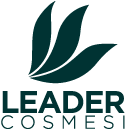Steroids Pharmacological
Steroids, particularly anabolic steroids, have gained significant attention both in the medical field and in the realm of sports and fitness. Their pharmacological properties can be quite complex, involving various mechanisms that lead to a wide range of effects on the body.
What Are Steroids?
Steroids are organic compounds that share a common chemical structure known as the steroid nucleus. They are categorized mainly into two classes: corticosteroids and anabolic-androgenic steroids (AAS). While corticosteroids are primarily involved in regulating metabolism and immune responses, AAS are used for their muscle-building properties.
Corticosteroids
- Types: Cortisol is the primary natural corticosteroid.
- Functions: These steroids help manage inflammation, stress response, and immune function.
- Medical Uses: Prescribed for conditions such as asthma, arthritis, and skin disorders.
Anabolic-Androgenic Steroids (AAS)
- Anabolism: Refers to the process of building up organs and tissues.
- Androgenic Effects: Related to the development of male characteristics.
- Common Uses: Treatment of muscle-wasting diseases and hormone deficiencies.
Steroids are synthetic compounds that mimic the effects of natural hormones in the body, particularly testosterone. They are widely used in medicine to treat a variety of conditions, such as inflammation, autoimmune disorders, and hormonal imbalances. The pharmacological action of steroids involves binding to specific receptors in cells, which then modulate gene expression and protein synthesis, leading to their therapeutic effects. For those interested in exploring more about steroids or considering purchasing them, you can buy online from reputable sources.
Mechanism of Action
The pharmacodynamics of steroids involve their interaction with the androgen receptor (AR) or glucocorticoid receptor (GR), depending on whether they are anabolic or corticosteroids, respectively.
Binding and Activation
- Step 1: Steroids pass through cell membranes due to their lipophilic nature.
- Step 2: Once inside, they bind to specific receptors in the cytoplasm or nucleus.
- Step 3: This binding activates the receptor, leading to the transcription of target genes.
Effects on Protein Synthesis
The activation of these receptors promotes an increase in protein synthesis, leading to muscle growth and recovery in the case of anabolic steroids, while corticosteroids reduce muscle wasting during severe illness.
Therapeutic Applications
Steroids have various therapeutic applications based on their unique properties.
Corticosteroids
- Anti-inflammatory: Used to treat chronic inflammatory diseases.
- Immunosuppressive: Employed in autoimmune disorders to suppress an overactive immune system.
- Hormonal Replacement: Utilized in adrenal insufficiency conditions.
Anabolic Steroids
- Muscle Wasting: Effective in treating patients suffering from cachexia.
- Age-related Hormone Deficiency: Can restore lost muscle mass in elderly patients.
- Severe Burns: Promotes healing and muscle retention during recovery.

Side Effects and Risks
While steroids can provide substantial benefits, they also come with a range of side effects that must be considered.
Common Side Effects of Anabolic Steroids
- Cardiovascular Issues: Increased risk of heart disease and hypertension.
- Liver Damage: Potential for hepatotoxicity, especially with oral steroids.
- Hormonal Imbalances: Can lead to gynecomastia and infertility in men, and masculinization in women.
- Psychoactive Effects: Mood swings, aggression, and other psychological effects.
Common Side Effects of Corticosteroids
- Weight Gain: Common due to increased appetite and fluid retention.
- Osteoporosis: Long-term use can lead to weakened bones.
- Infections: Immunosuppression increases the risk of infections.
Conclusion
The pharmacological properties of steroids encompass a wide range of therapeutic applications as well as potential risks. Understanding how these compounds work at a molecular level can empower healthcare professionals and patients alike to make informed decisions regarding their use. Whether it is for managing health conditions or enhancing physical performance, knowledge is key to harnessing the benefits while mitigating the risks associated with steroid use.

Comments
Comments are closed.